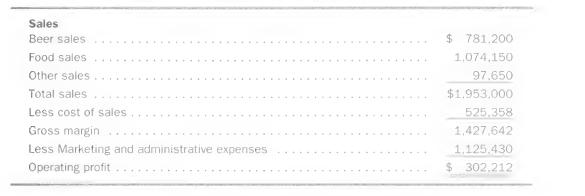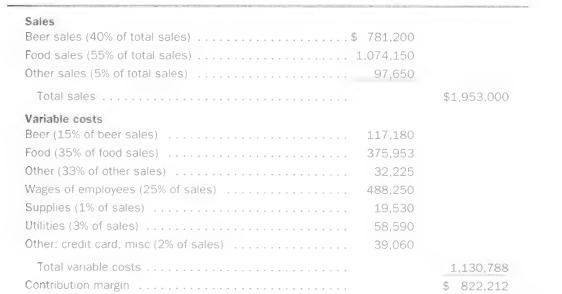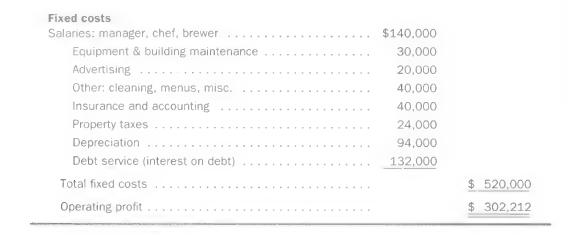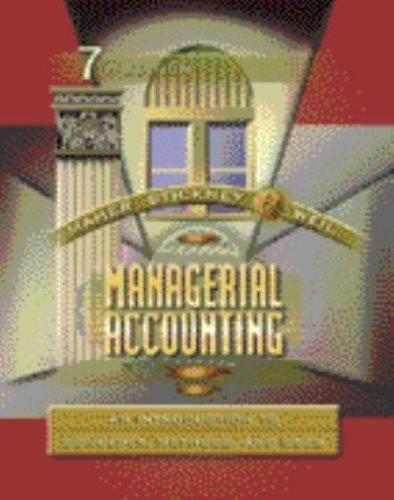Financial Modeling for a Brewpub. (Printed with permission from Kurt Heisinger, Sierra College, March 2000.) Three entrepreneurs
Question:
Financial Modeling for a Brewpub. (Printed with permission from Kurt Heisinger, Sierra College, March 2000.)
Three entrepreneurs were looking to start a new brewpub near Sacramento, California, called Roseville Brewing Company (RBC). (See Managerial Application "Calculating Break-Even Points for a Brewpub.") Brewpubs provide two products to customers — food from the restaurant segment and freshly brewed beer from the beer production segment. Both segments are typically in the same building, which allows customers to see the beer-brewing process.
After months of research, the owners created a financial model that showed the following projections for the hi st year of operations.
In the process of pursuing capital through private investors and financial institutions, RBC was approached with several questions. The following represents a sample of the more common questions asked:
■ What is the break e\ en point?
■ What sales dollars will be required to make $200,000? To make $500,000?
■ Is the product mix reasonable? (Beer tends to have a higher contribution margin ratio than food, and therefore product mix assumptions are critical to profit projections.)
■ What happens to operating profit if the product mix shifts .'
■ How will changes in price affect operating profit?
■ How much does a pint of beer cost to produce?
It became clear to the owners of RBC that the initial financial model was not adequate for answering these types of questions. After f u rther research, RBC created another financial model that provided the following information for the first year of operations:

Answer the following questions using the information in the case.
1. What were potential investors and financial institutions concerned with when asking the questions listed in the case?
2. Why was the first financial model prepared by RBC inappropriate for answering most of the questions asked by investors and bankers? Be specific.
3. If you were deciding whether to invest in RBC, how would you quickly check the reasonableness of RBC's projected operating profit?
4. Why is the question "How much does a pint of beer cost to produce?" difficult to answer?
5. Perform sensitivity analysis by answering the following questions.
a. What is the break-even point in sales dollars for RBC?
b. What is the margin of safety for RBC?
c. Why can't RBC find the break-even point in units?
d. What sales dollars would be required to achieve an operating profit of
$200,000? $500,000? What assumptions are made in this calculation?
6. Assume total revenues remain the same, but the product mix changes so that each of the three revenue categories is weighted as follows: Food 70%, beer 25%, other 5%. How will this shift in product mix affect projected profits?
7. Although the financial model is important, what other strategic factors should be considered by RBC and its investors?
Step by Step Answer:

Managerial Accounting An Introduction To Concepts Methods And Uses
ISBN: 9780030259630
7th Edition
Authors: Michael W. Maher, Clyde P. Stickney, Roman L. Weil, Sidney Davidson





